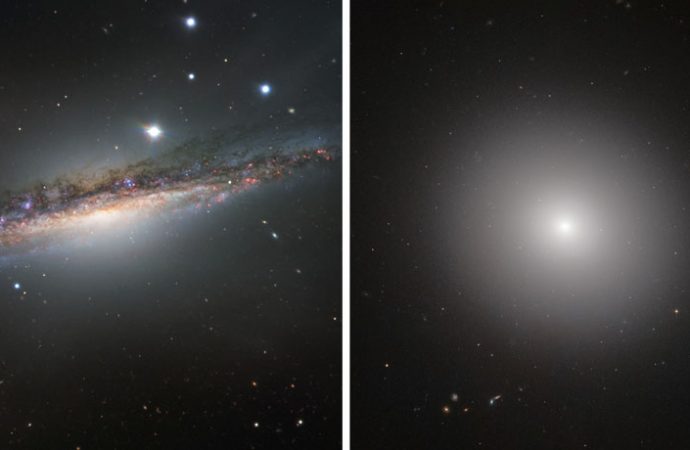A new survey precisely links the shape of a galaxy to the ages of its stars
It’s hard to keep trim when you’re an old galaxy.
A survey of hundreds of galaxies found a clear link between their shapes and their stars’ ages, astronomers report April 23 in Nature Astronomy. Galaxies with younger stars are more squashed into flatter shapes, while galaxies with older stars are more blobby, says astronomer Jesse van de Sande of the University of Sydney.
“We’ve known for a long time that shape and age are linked in very extreme galaxies, very flat ones and very round ones,” he says. “This is the first time we’ve shown it’s true for all kinds of galaxies — all shapes, all ages, all masses.”
Van de Sande and his colleagues used observations of 843 galaxies from the SAMI Galaxy Survey to discover the relationship. The team quantified the galaxies’ ellipticity, a measure of how flattened or spherical they are, by measuring how the stars move around. In a highly elliptical galaxy, such as a giant spiral like the Milky Way, the stars have ordered motion, like cars around a racetrack. In a more blobby galaxy with low ellipticity, the stars move more randomly, like a swarm of bees. The colors of a galaxy’s stars indicated their average age.
Plotting the ages and stellar motions revealed the trend: The older the stars, the more random their motions, and so the rounder a galaxy’s shape. The younger the stars, the less random their motions, and the flatter a galaxy’s shape.
The fact that one number, the randomness of the stars’ motions, “captures the essence of a galaxy’s shape, and that this number moves in lockstep with the galaxy’s age, was surprising,” van de Sande says.
It’s not clear yet if galaxies start out as pretty spirals and grow more blobby over time, or if the older ones were blobby all along.
Aging gracefully
The ages and motions of stars in a galaxy are closely related to its shape, astronomers found. The younger the stars and the less random their motion, the flatter the galaxy.


































Leave a Comment
You must be logged in to post a comment.